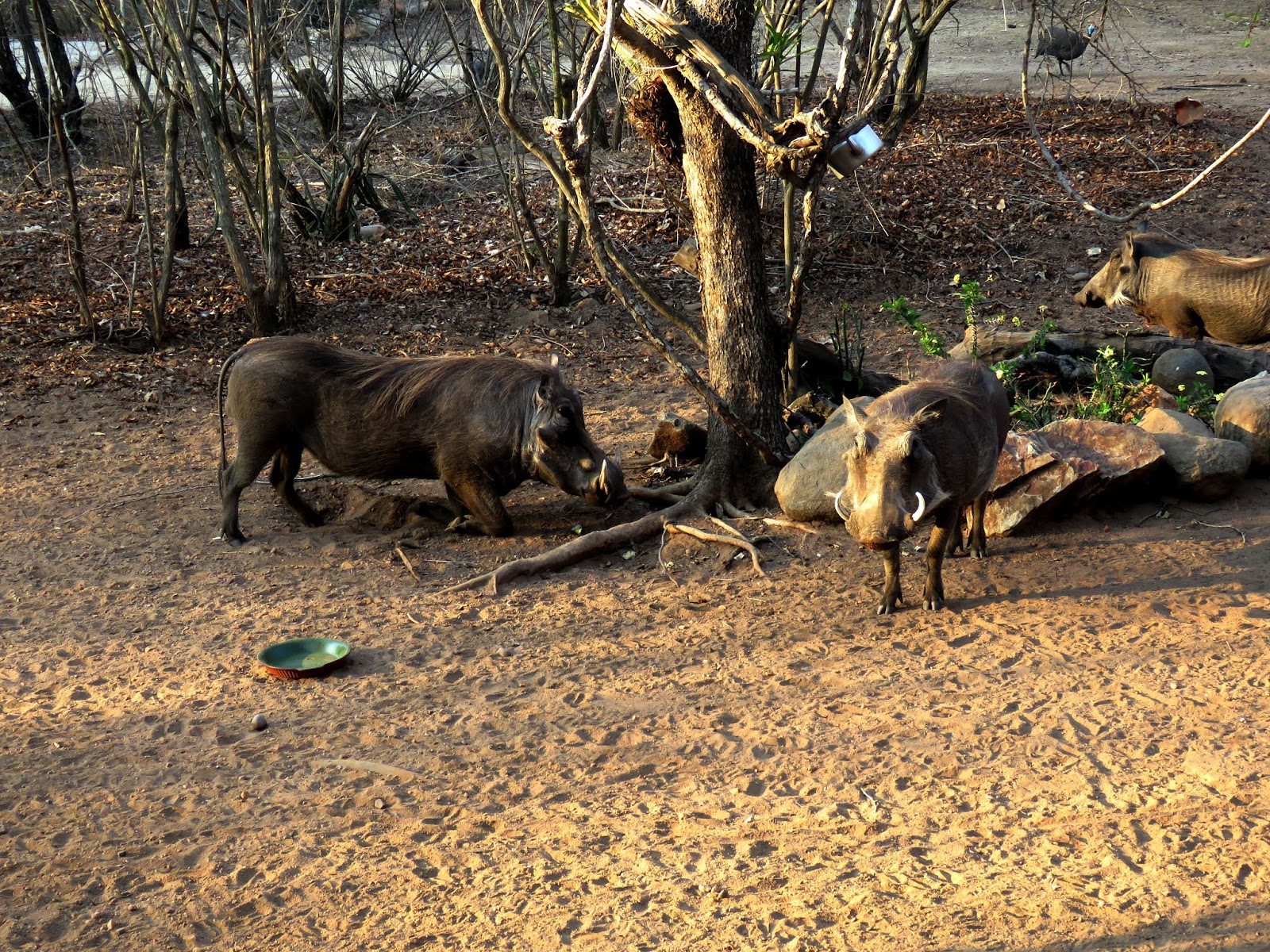 |
| Check out those long eyelashes. |
 |
| A vulture is on the lookout for a meal. |
We often see videos on YouTube, at Marloth Park’s and Kruger National Park’s websites and Facebook pages and other locations that depict horrific photos of wildlife being captured and subsequently eaten by apex predators.
 |
| Their graceful beauty is breathtaking. |
The little bushbuck’s legs were kicking at its last moments of life. Sure, the person who’d found this sighting surely was pleased to have witnessed such a scenario first hand, right here in Marloth Park.
 |
| She noticed us watching her from the dirt road. |
There’s no doubt had we encountered such a sighting, we’d also have taken photos and posted them. And, yes, it is a part of life worthy of sharing with others who appreciate and love nature including the good and bad it has to offer.
 |
| Giraffe mom and baby. |
Most assuredly, some who see such a photo would find it “cool” with no emotion attached to their response. It all depends on one’s attachment and love of nature that precipitates a human response.
Oftentimes, I’ve shed tears watching the brutal slaughter of animals for human consumption. My life-saving diet requires I consume meat, fish, chicken, and other animals (I refuse to eat any of the animals we see in Marloth Park or on safari). Otherwise, I’d only be able to eat eggs and non-starchy vegetables, not providing sufficient nutrition for survival.
 |
| Generally, giraffes don’t bend much to eat although they must in order to drink. On occasion, they find certain bushes appealing requiring them to bend to graze. |
The reality for those with religious or scientific beliefs is the fact that animals, by our higher power or other beliefs, were placed on this earth to provide sustenance for other carnivorous creatures including humans. Otherwise, why would ours and their bodies have been designed to consume food as a herbivore, omnivore, or carnivore?
For example, cows have four stomachs as described here: “The cow has four stomachs and undergoes a special digestive process to break down the tough and coarse food it eats. When the cow first eats, it chews the food just enough to swallow it. The unchewed food travels to the first two stomachs, the rumen, and the reticulum, where it is stored until later.”
 |
| Another bird of prey on a search for a meal. |
 |
| Wildebeest grazing in the bush. |
 |
| A vulture spreading its wings in the treetop. |
Photo from one year ago today, September 10, 2017:
 |
| From Part 2 of Toledo Coffee tour in Costa Rica: These dark beans were as a result of the end of the roasting cycle, created the darkest roast which much to our surprise contained the least caffeine. The light roast, produced at the beginning of the roasting cycle contains the highest levels of caffeine. (See our above video) Who knew? For more details, please click here. |








































































































